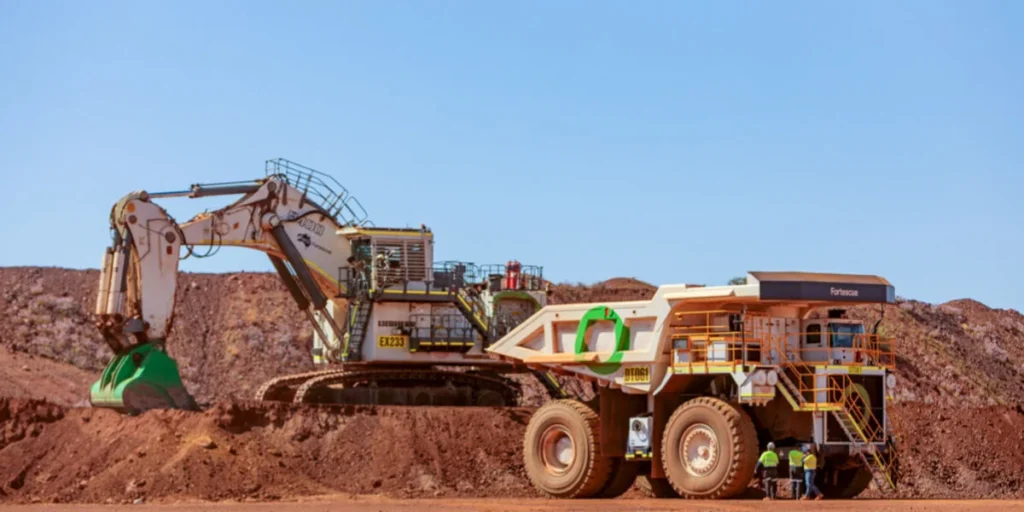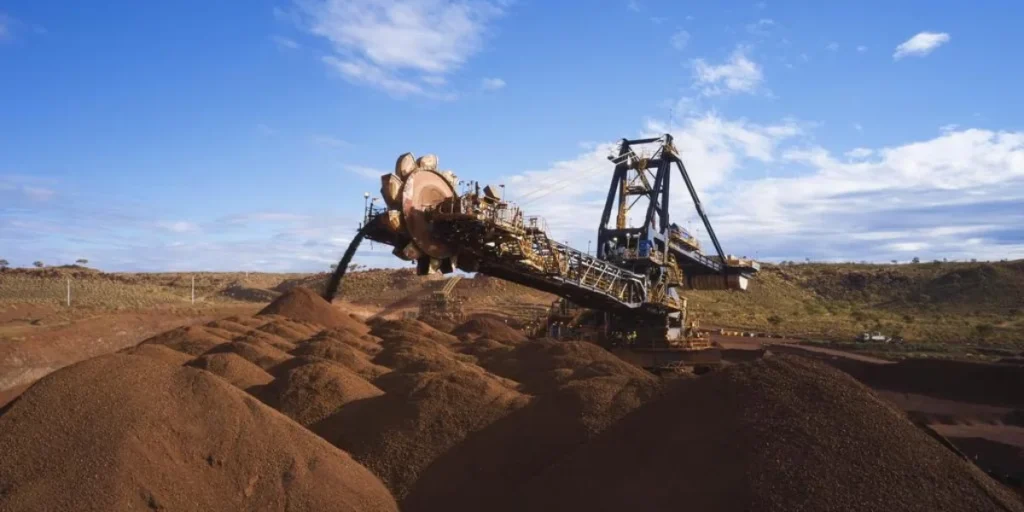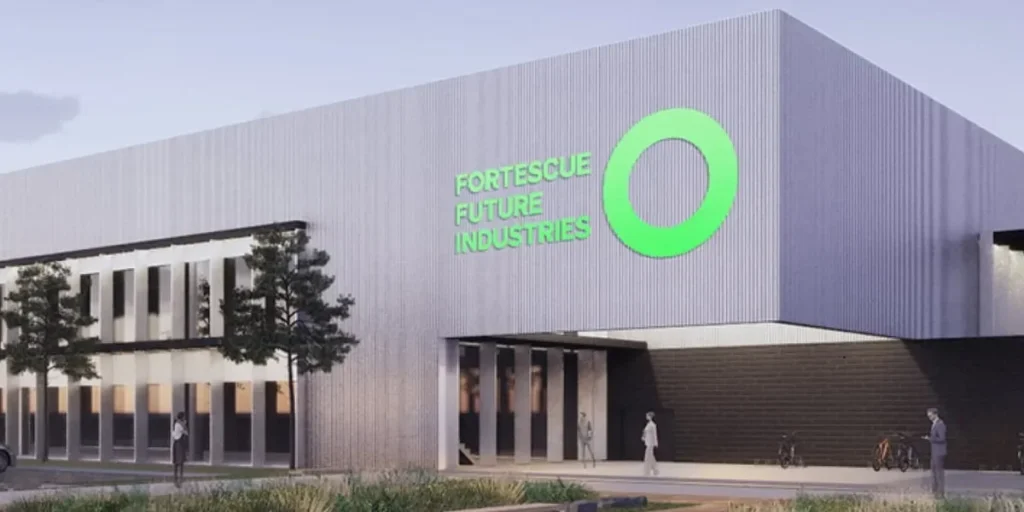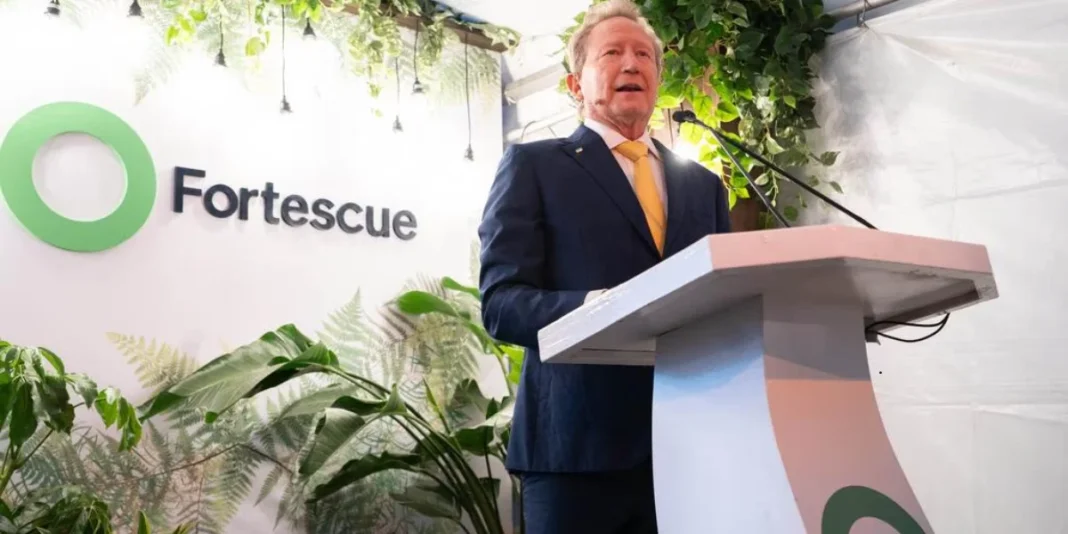Fortescue job cuts have sent shockwaves through the mining industry as the company prepares to axe hundreds of positions across its UK and Australian operations. The massive workforce reduction primarily affects Fortescue Zero, the company’s green energy subsidiary, with at least 200 of the unit’s 1,100-plus employees expected to be laid off. This restructuring represents a significant blow to jobs in the Australian mining industry and the broader Australian jobs market, particularly in the manufacturing sector.
Furthermore, the company has officially confirmed these redundancies at Fortescue Zero, marking the largest staffing reduction since approximately 700 employees were laid off last year. Meanwhile, the cuts come at a critical juncture as Fortescue simultaneously ramps up the rollout of new technologies required to achieve its ambitious “real zero” emissions target by 2030. Notably, this environmental goal necessitates the deployment of up to 400 massive 240-tonne electric haul trucks for ore transportation at its mining sites. The Fortescue job cuts in 2025 reflect a broader strategic realignment as the company navigates challenges in its green hydrogen initiatives while maintaining its position in the rapidly evolving green technology landscape.
Fortescue Cuts 1000 Jobs Across the UK and Australia

Mining giant Fortescue has announced a sweeping round of job cuts affecting approximately 1000 positions across operations in the United Kingdom and Australia. This decision comes as the company shifts manufacturing activities offshore to China and Germany, representing a significant blow to its green energy initiatives.
Fortescue Zero Division Hit Hardest
The bulk of the redundancies will impact Fortescue Zero, the company’s green technology arm, with at least 200 of the division’s 1,100-plus workforce expected to be made redundant. This substantial reduction marks the most significant staffing cull since Fortescue eliminated 700 positions last year. The cuts occur despite the company’s continued push toward achieving its ambitious “real zero” emissions target by 2030, which requires eliminating all gas and diesel usage at its Pilbara iron ore operations.
Job Losses Spread Accross Sectors
The restructuring affects employees across multiple departments and position types. Previous rounds of Fortescue job cuts in 2025 primarily impacted white-collar workers at the Perth headquarters. According to Andrew Forrest, these earlier redundancies targeted duplicated roles:
“It’s in community, it’s in government relations, it’s in HR, Fortescue people — it’s in all the white collar jobs where there’s duplication between mining and energy”.
The current cuts, however, extend beyond administrative positions to include manufacturing roles, as production activities shift offshore. Consequently, the company’s UK-based operations will transform from manufacturing centres to research and development facilities.
Staff Informed at the UK Site Near London
Employees at Fortescue’s factory, located north of London, received unwelcome news on Tuesday morning. According to company statements, the majority of affected positions will be in the United Kingdom. Fortescue executive Gus Pichot acknowledged the problematic nature of the decision:
“This is never an easy decision, and Fortescue is dedicated to guiding the transition with compassion, respect and support”.
The company has committed to providing support to affected staff during this transition period. Nevertheless, these job reductions in Australia raise questions about Fortescue’s ability to maintain its ambitious green energy targets, especially following the abandonment of several key projects in 2023.
Fortescue Shifts Manufacturing to China and Germany

In a significant strategic pivot, Fortescue has announced the outsourcing of its manufacturing operations to China and Germany, fundamentally altering its global production strategy alongside the recent Fortescue job cuts.
Outsourcing Decision Driven By Cost and Efficiency
The decision to shift manufacturing offshore stems primarily from cost considerations and production efficiency goals. Fortescue will provide the first 20 electric motors and powertrains for nearly 200 electric trucks to be delivered by Germany’s Liebherr, but the remainder will be outsourced to manufacturers in China. This restructuring forms part of Fortescue’s AUD 4.28 billion (£2.1 billion) programme to deploy up to 400 autonomous electric mining trucks starting in 2026.
Additionally, half of these massive 240-tonne electric haul trucks will be built by China’s XCMG, following an agreement announced several weeks ago. The company’s Chief Financial Officer, Paget, noted that Chinese equipment offers distinct advantages in “cost, delivery, and technological innovation”.
Oxford Site to Focus Solely on R&D
Fortescue’s Banbury facility in Oxfordshire, formerly Williams Advanced Engineering, will transition from manufacturing to become an exclusively research and development centre. Although this shift eliminates numerous jobs in Australia, the site will still design and develop electric motors and build up to 20 prototypes for initial deployment at the Pilbara operations.
Agustin Pichot, Fortescue’s head of growth and energy, explained the rationale: “Fortescue Zero will remain focused on research and development – rather than manufacturing – to deliver the technologies that will decarbonise the Pilbara operations by 2030“. This emphasis on R&D reflects the company’s belief that it must be “more fleet of foot” to remain competitive in rapidly evolving green technologies.
Andrew Forrest: ‘It’s Senseless to Compete with China’
Executive Chairman Andrew Forrest has been forthright about the decision, stating bluntly: “It’s senseless to compete. It’s cost them [the Chinese] tens of billions of dollars, at least”. His assessment followed a visit to Chinese factories where he observed “the most sophisticated automation levels in the world”.
Forrest’s perspective aligns with Fortescue’s broader strategy of “building global alliances” that link “the Pilbara’s world-leading operational expertise” with “scale and cost-efficient manufacturing capability in China and the US”. This approach ultimately aims to balance Fortescue’s job reductions with maintaining the company’s ambitious “real zero” emissions target by 2030.
Executives Justify Cuts as Strategic Realignment
Fortescue executives have defended the latest round of Fortescue job cuts as an essential strategic realignment to secure the company’s position in a rapidly evolving green technology landscape. Top management argues that these challenging choices are a response to shifting business dynamics and technical breakthroughs.
Gus Pichot Outlines Need For Speed and Innovation
Gus Pichot, Fortescue’s Chief Executive of Growth and Energy, emphasised that market developments have necessitated this shift. “As we anticipated, technologies have advanced rapidly, market capability has grown and others are now ready to match our ambition,” Pichot explained. Moreover, he acknowledged the human impact, stating: “This is never an easy decision and Fortescue is dedicated to guiding the transition with compassion, respect and support”.
Production to Research
The restructuring represents a fundamental pivot from manufacturing to innovation. “To stay at the forefront of this acceleration and maintain our competitive edge, Fortescue is shifting emphasis from in-house manufacturing to research and development, ensuring innovation moves faster and remains unconstrained,” Pichot elaborated. In essence, this approach aligns with Fortescue’s core strategy:
- Accelerating research and development capabilities
- Refining technologies to deliver green molecules efficiently
- Focusing on creating cost-effective solutions at scale
Company Pursues Green Tech Edge

Specifically, Executive Chairman Andrew Forrest highlighted the strategic advantages of partnering with Chinese manufacturers. “Our partnerships give Fortescue access to that capability,” he noted, referring to China’s unprecedented scaling of green technologies. Consequently, he described the restructuring as “a truly multilateral collaboration that draws on the best ideas and manufacturing capacity to deliver the lowest cost energy and tackle climate change”.
The leadership team remains steadfast in their commitment to the company’s decarbonisation goals. Forrest has described Fortescue as “absolutely resolute” in pursuing its ambitious target to achieve “Real Zero by 2030“. Ultimately, as Forrest stated, “Being a first mover isn’t easy, but as we learnt 21 years ago, risk is always worth the reward”.
Fortescue’s Green Hydrogen Ambitions Face Setbacks
The recent Fortescue job cuts represent just the latest chapter in an ongoing series of setbacks for the company’s ambitious green hydrogen initiatives. Fortescue’s vision of becoming a leading green energy producer has encountered numerous obstacles over the past two years.
Arizona and Gladstone Projects Scrapped in 2023
Fortescue Zero’s progress suffered significant setbacks in 2023, with the cancellation of pivotal projects. The company abandoned plans for green hydrogen production in Arizona, USA, and shelved its Gladstone electrolyser factory in Queensland, Australia. Fortescue’s original intentions to produce 15 million tonnes of green hydrogen annually by 2030 were essentially put on hold by these decisions.
Previous Layoffs and Resignations in the Energy Division
Even before the current restructuring, Fortescue experienced significant upheaval in its green energy division. Approximately 700 employees lost their positions in 2023, primarily affecting technical roles and engineering teams. Furthermore, the company witnessed an exodus of senior talent, including the departure of multiple high-level executives from the Fortescue Jobs Energy Division.
Job Cuts Raise Concerns Over 2030 Plans
The consistent reduction in workforce across Fortescue’s green energy initiatives raises fundamental questions about the feasibility of the company’s decarbonisation timeline. Initially, the company pledged to invest over $9.4 billion through 2030 to eliminate fossil fuel use from its operations. Nevertheless, the ongoing Fortescue green hydrogen job cuts suggest a potential scaling back of these ambitious targets, particularly as manufacturing capabilities shift offshore and research budgets are tightened.
Conclusion – Fortescue Job Cuts
Fortescue’s decision to cut 1000 jobs across its UK and Australian operations certainly marks a pivotal moment in the company’s green energy journey. Despite maintaining ambitious “real zero” emissions targets for 2030, these redundancies, particularly affecting the Fortescue Zero division, signal a fundamental shift in how the company plans to achieve those goals. The transition of UK facilities from manufacturing hubs to research centres, therefore, represents a strategic pivot rather than an abandonment of green initiatives.
Nevertheless, questions remain about the feasibility of Fortescue’s environmental timeline. The pattern of downsizing, coupled with previously abandoned projects in Arizona and Gladstone, suggests significant challenges in balancing financial considerations with sustainability objectives. Meanwhile, the shift of manufacturing operations to China and Germany highlights the economic realities facing companies attempting to lead the green energy transition.
Executive Chairman Andrew Forrest’s frank acknowledgment that competing with Chinese manufacturing capabilities is “senseless” underscores a pragmatic approach to achieving sustainability goals. Accordingly, Fortescue appears to be recalibrating its strategy, focusing on research and development while leveraging international partnerships for production capabilities.
Ultimately, Fortescue’s restructuring represents the challenging reality of pioneering green technology in traditional industries. The coming years will determine whether this strategic realignment truly positions the company for success in achieving its ambitious environmental goals or simply marks another setback in its decarbonisation journey.
You May Also Be Interested In: RBA Interest Rate Holds Steady at 3.6% Amid Economic Uncertainty
How will the job cuts affect Fortescue’s green energy initiatives?
The job cuts, particularly in the Fortescue Zero division, represent a strategic shift in the company’s approach. While Fortescue maintains its 2030 “real zero” emissions target, the company is transitioning from in-house manufacturing to a focus on research and development, aiming to accelerate innovation in green technologies.
Why is Fortescue moving manufacturing operations to China and Germany?
Fortescue is outsourcing manufacturing to China and Germany due to cost considerations and production efficiency. The company believes that Chinese equipment offers advantages in terms of cost, delivery, and technological innovation, making it more sensible to partner with these manufacturers rather than compete directly.
What will happen to Fortescue’s UK operations following these cuts?
The UK operations, particularly the Banbury facility in Oxfordshire, will transition from manufacturing to becoming exclusively a research and development centre. While this shift eliminates numerous jobs, the site will continue to design and develop electric motors and build prototypes for initial deployment.






